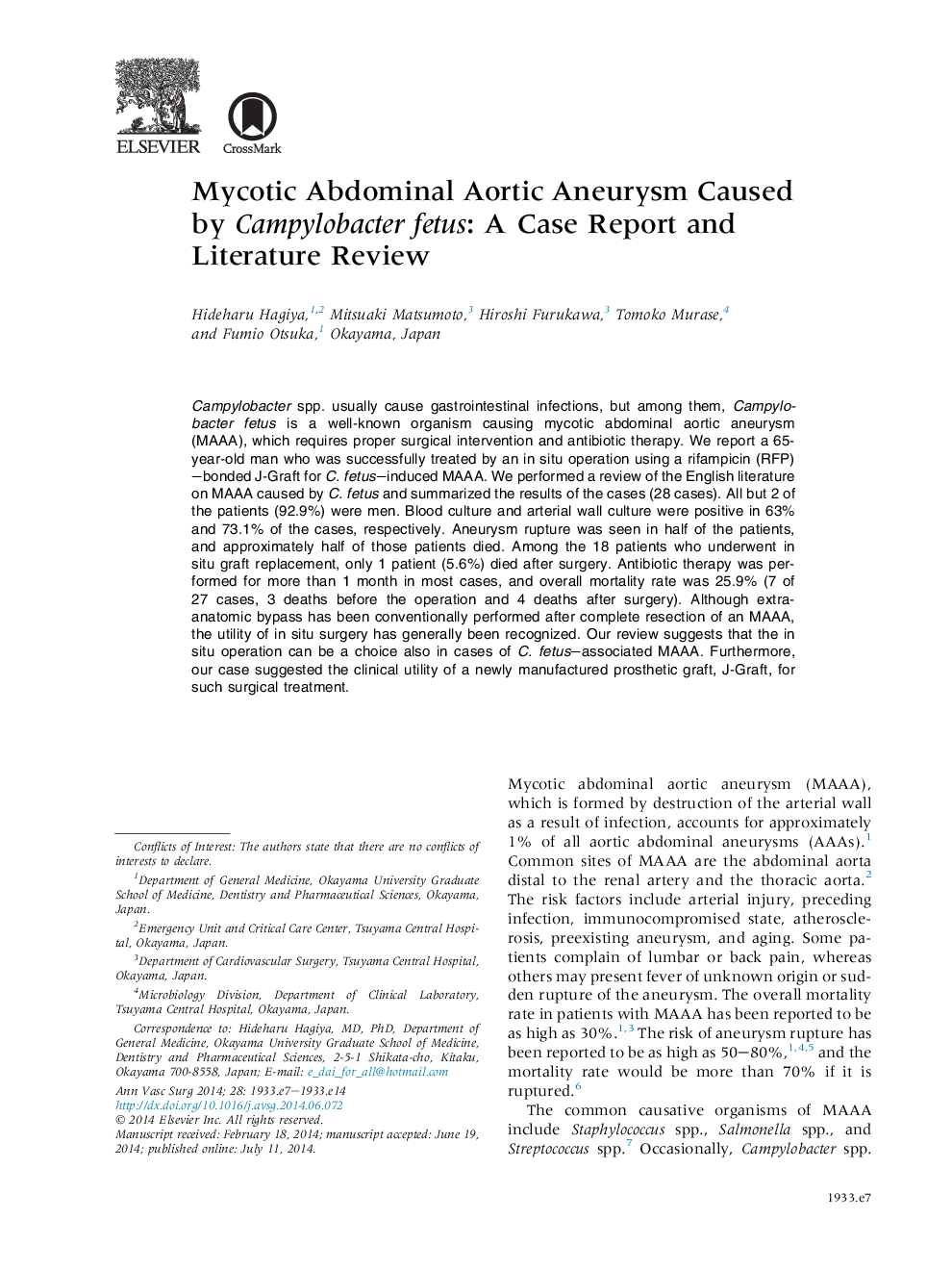| Article ID | Journal | Published Year | Pages | File Type |
|---|---|---|---|---|
| 2886033 | Annals of Vascular Surgery | 2014 | 8 Pages |
Abstract
Campylobacter spp. usually cause gastrointestinal infections, but among them, Campylobacter fetus is a well-known organism causing mycotic abdominal aortic aneurysm (MAAA), which requires proper surgical intervention and antibiotic therapy. We report a 65-year-old man who was successfully treated by an in situ operation using a rifampicin (RFP)-bonded J-Graft for C. fetus-induced MAAA. We performed a review of the English literature on MAAA caused by C. fetus and summarized the results of the cases (28 cases). All but 2 of the patients (92.9%) were men. Blood culture and arterial wall culture were positive in 63% and 73.1% of the cases, respectively. Aneurysm rupture was seen in half of the patients, and approximately half of those patients died. Among the 18 patients who underwent in situ graft replacement, only 1 patient (5.6%) died after surgery. Antibiotic therapy was performed for more than 1Â month in most cases, and overall mortality rate was 25.9% (7 of 27 cases, 3 deaths before the operation and 4 deaths after surgery). Although extra-anatomic bypass has been conventionally performed after complete resection of an MAAA, the utility of in situ surgery has generally been recognized. Our review suggests that the in situ operation can be a choice also in cases of C. fetus-associated MAAA. Furthermore, our case suggested the clinical utility of a newly manufactured prosthetic graft, J-Graft, for such surgical treatment.
Related Topics
Health Sciences
Medicine and Dentistry
Cardiology and Cardiovascular Medicine
Authors
Hideharu Hagiya, Mitsuaki Matsumoto, Hiroshi Furukawa, Tomoko Murase, Fumio Otsuka,
